Grits and Dogs: Canines and Cornmeal
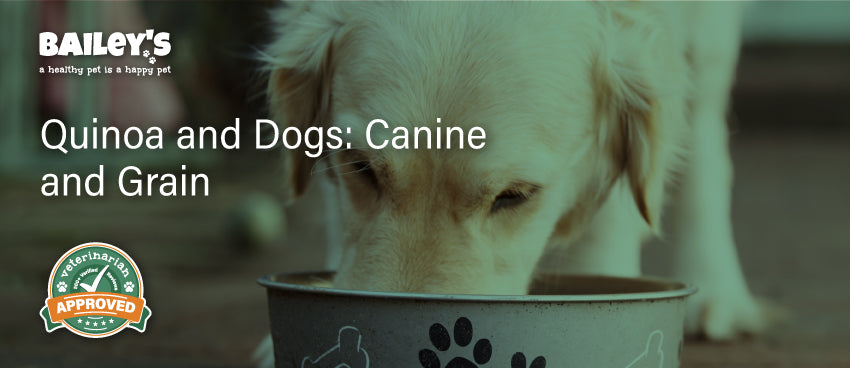
Grits and dogs have a unique relationship that goes beyond the human breakfast table. Canines and cornmeal have been linked for centuries, and understanding their connection is key to providing proper nutrition for our furry friends. The helpful friends at Bailey’s CBD are here to help us explore the important elements of canine nutrition and how grits do or do not fit in.

Table of Contents
1. Understanding the Basics of Canine Nutrition
Before delving into the specifics of cornmeal and grits in a dog's diet, it's crucial to have a basic understanding of canine nutrition. Dogs are omnivores, which means they require a balanced diet of both animal and plant-based foods to thrive. Meeting their nutritional needs involves providing a mix of proteins, carbohydrates, fats, vitamins, and minerals in their diet.
When it comes to canine nutrition, it's important to consider the unique dietary requirements of dogs. Unlike humans, dogs have a shorter digestive tract, which means they are better equipped to digest and absorb nutrients from animal-based proteins. However, this doesn't mean that plant-based foods should be excluded from their diet. Incorporating a variety of plant-based ingredients can provide dogs with essential nutrients and dietary fiber.
Proteins are the building blocks of a dog's body and are crucial for growth, development, and maintenance. Animal-based proteins, such as chicken, beef, and fish, are highly digestible and provide dogs with essential amino acids. Plant-based proteins, such as those found in grains like cornmeal, can also contribute to a dog's protein intake, although they may not be as easily digestible.
1.1 The Role of Grains in a Dog's Diet
Grains, including cornmeal, can be a valuable component of a dog's diet. Contrary to popular belief, grains are not inherently bad for dogs. They can provide important nutrients and serve as a source of energy. Grains are also a cost-effective option for commercial dog foods, making them accessible to a wide range of pet owners.
When selecting grains for a dog's diet, it's important to choose whole grains that are minimally processed. Whole grains retain their natural fiber and nutrient content, providing dogs with additional health benefits. In addition to cornmeal, other grains commonly used in dog food include rice, barley, and oats.
Grains can provide dogs with carbohydrates, which are a vital source of energy. Carbohydrates are broken down into glucose, which is used by the body for various metabolic processes. While dogs have a limited ability to digest carbohydrates compared to humans, they can still benefit from their inclusion in their diet.
1.2 Nutritional Value of Cornmeal for Dogs
Cornmeal, derived from ground corn, offers several nutritional benefits for dogs. It is a good source of carbohydrates, providing energy for active dogs. Cornmeal also contains essential vitamins and minerals, including niacin, thiamine, and phosphorus.
Niacin, also known as vitamin B3, is important for a dog's metabolism and helps maintain healthy skin and coat. Thiamine, or vitamin B1, plays a crucial role in energy production and supports proper nerve function. Phosphorus is essential for bone health and is involved in various physiological processes, including cell growth and repair.
When incorporating cornmeal into a dog's diet, it's important to do so in moderation. While cornmeal can provide dogs with valuable nutrients, excessive consumption can lead to weight gain and digestive issues. It's always best to consult with a veterinarian to determine the appropriate amount of cornmeal or any other ingredient to include in a dog's diet.
2. The History of Grits in Dog Food
Throughout history, the ingredients used in dog food have evolved, and cornmeal has emerged as a staple ingredient in many commercial dog foods. Understanding the history and evolution of dog food ingredients sheds light on the use of grits in today's pet food industry.
2.1 Evolution of Dog Food Ingredients
In the early days, dogs were primarily fed table scraps and leftover human food. This practice was based on the belief that dogs could eat anything humans ate. However, as our understanding of canine nutrition grew, so did the need for specialized dog food.
As the pet food industry developed, manufacturers began formulating specific diets for dogs. They realized that dogs have unique dietary requirements that differ from those of humans. This realization led to the inclusion of ingredients that catered to the nutritional needs of dogs.
One such ingredient that found its way into dog food recipes was grits. Grits are made from ground cornmeal and have been a popular food staple in many cultures for centuries. The use of grits in dog food can be traced back to their affordability and nutritional profile.
Grits are an excellent source of carbohydrates, providing dogs with the energy they need to stay active and healthy. They also contain essential nutrients such as iron, niacin, and thiamine, which contribute to a well-balanced diet for dogs.
Furthermore, grits are easily digestible for dogs, making them a suitable ingredient for those with sensitive stomachs. This digestibility factor is crucial in ensuring that dogs can efficiently absorb the nutrients from their food.
2.2 Cornmeal as a Staple in Commercial Dog Food
Today, many commercial dog food brands include cornmeal as a key ingredient. Cornmeal, derived from ground corn, has become a staple in the pet food industry due to its numerous benefits.
One of the primary reasons cornmeal is used in commercial dog food is its affordability. Corn is a widely available crop, making cornmeal a cost-effective ingredient for manufacturers. This affordability allows pet food companies to produce dog food at a reasonable price point, making it accessible to a wide range of pet owners.
In addition to its cost-effectiveness, cornmeal provides dogs with a source of energy. Carbohydrates, like those found in cornmeal, are a vital energy source for dogs, especially those with an active lifestyle. Cornmeal helps fuel their daily activities and supports their overall health and well-being.
It's important to note that while cornmeal is a common ingredient in commercial dog food, it should not be the sole component of a dog's diet. A well-balanced dog food formula should include a variety of ingredients to ensure all nutritional needs are met. Pet owners should carefully review the ingredients list and nutritional information when selecting a commercial dog food brand.
The inclusion of grits, in the form of cornmeal, in dog food recipes has a long history rooted in the evolution of canine nutrition. Grits provide dogs with a source of energy, and essential nutrients, and are easily digestible. While cornmeal is a staple in many commercial dog food brands, it should be part of a balanced diet that incorporates other ingredients to meet a dog's specific nutritional requirements.
3. Pros and Cons of Feeding Grits to Dogs
Feeding grits to dogs comes with its own set of advantages and disadvantages. Understanding these pros and cons allows pet owners to make informed decisions regarding their dog's diet.
3.1 Health Benefits of Grits for Dogs
Grits can offer various health benefits for dogs when incorporated into their diet. The high carbohydrate content provides a quick source of energy, making it beneficial for active dogs. Additionally, the nutritional value of cornmeal can contribute to a well-rounded diet when combined with other nutritious ingredients.
One of the key health benefits of grits for dogs is its high fiber content. Fiber plays a crucial role in maintaining a healthy digestive system by promoting regular bowel movements and preventing constipation. It can also help regulate blood sugar levels, reducing the risk of diabetes in dogs.
Grits are also a good source of essential vitamins and minerals. They contain significant amounts of thiamine, niacin, and folate, which are essential for a dog's overall health and well-being. Thiamine, for example, is vital for proper nerve function, while niacin is necessary for healthy skin and a shiny coat.
Furthermore, the texture of grits can be beneficial for dental health. The coarse texture can help remove plaque and tartar buildup, promoting better oral hygiene and reducing the risk of dental diseases such as gum inflammation and tooth decay.
3.2 Potential Risks and Side Effects
While grits can be a healthy addition to a dog's diet, it's essential to consider potential risks and side effects. In some cases, dogs may experience digestive issues or allergies to corn products. Additionally, excessive consumption of cornmeal can lead to weight gain. Monitoring portion sizes and observing any adverse reactions is crucial when feeding grits to dogs.
Some dogs may have difficulty digesting corn products due to their sensitive stomachs. This can result in symptoms such as diarrhea, vomiting, or flatulence. It is important to introduce grits gradually into a dog's diet and monitor their response to ensure they can tolerate it well.
Another potential risk is the presence of mycotoxins in corn, which can occur due to fungal contamination. Mycotoxins are toxic substances that can have harmful effects on a dog's health if consumed in large amounts. It is crucial to choose high-quality cornmeal and ensure proper storage to minimize the risk of mycotoxin contamination.
Furthermore, while grits can provide energy, excessive consumption can lead to weight gain, especially in less active or overweight dogs. It is important to consider the overall calorie intake and balance it with the dog's exercise level to prevent obesity and related health issues.
Therefore, while grits can offer health benefits to dogs, it is important to be aware of the potential risks and side effects. Consulting with a veterinarian and monitoring the dog's response to grits can help ensure a safe and balanced diet for our furry friends. Remember that your dog’s favorite veterinarian is always your best resource for guidance about the best supplements, treats, and diet for your pet.
4. Preparing Homemade Grits for Your Dog
For dog owners who prefer to prepare homemade meals for their furry companions, making dog-safe grits at home is a viable option.
4.1 Choosing the Right Ingredients
When making homemade grits for dogs, selecting high-quality ingredients is paramount. Opt for organic or non-GMO cornmeal to ensure the absence of potentially harmful additives. Additionally, consider incorporating other nutritious ingredients such as lean proteins, vegetables, and healthy fats to create a balanced meal.
4.2 Cooking Techniques for Dog-Safe Grits
When preparing grits for dogs, it's crucial to avoid using salt, butter, or other seasonings that may be harmful to their health. Instead, cook the grits with plain water or low-sodium broth to enhance the flavor without compromising their well-being. Serve the cooked grits in appropriate portion sizes to avoid overfeeding.

5. Alternatives to Grits in a Dog's Diet
While grits can be a suitable component of a dog's diet, there are alternative grain options and dietary approaches to consider.
5.1 Other Grain Options for Dogs
If grits aren't readily available or suitable for your dog, there are other grain options to consider. Rice, quinoa, and barley are alternative grains that can provide similar nutritional benefits. These grains offer different textures and flavor profiles, providing variety in a dog's diet.
5.2 Grain-Free Diet: Is it Right for Your Dog?
Some dog owners opt for grain-free diets for their pets, believing it to be a healthier option. However, the necessity of a grain-free diet for dogs without grain allergies or sensitivities is a topic of debate among experts. Before considering a grain-free diet, it's essential to consult with a veterinarian to determine if it is appropriate for your dog.
6. Conclusion
In conclusion, grits and cornmeal can be a beneficial addition to a dog's diet when incorporated responsibly. Understanding the basics of canine nutrition, the history of grits in dog food, and the pros and cons of feeding grits to dogs allows pet owners to make informed decisions. Whether opting for commercial dog food or preparing homemade meals, it's crucial to prioritize balanced nutrition and monitor portion sizes while evaluating all parts of diet and lifestyle to ensure the well-being of our four-legged friends.

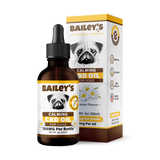
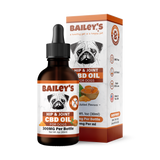
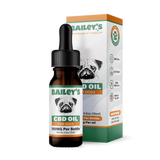
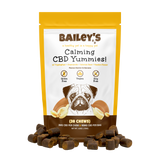
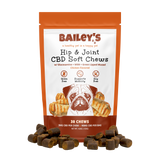
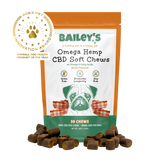
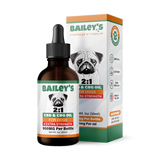
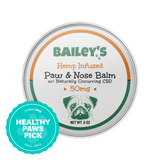

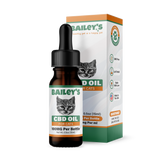
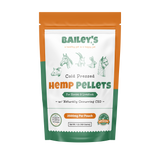
Hello Charles,
Thank you for reaching out and sharing details about your homemade dog food recipe! It sounds like you’re providing a nutritious mix for your large dogs with lean pork, veggies, and brown rice. Regarding the addition of grits to your dog food mix, grits can be a safe ingredient to include in moderation. They are a source of carbohydrates and can provide extra energy for your dogs. However, it’s important to consider a few factors:
Digestibility: Ensure that the grits are cooked thoroughly to enhance digestibility. Dogs can have sensitive digestive systems, and uncooked or poorly cooked grains can be difficult for them to digest.
Caloric Content: Grits are relatively high in calories. Adding them to your dogs’ diet means you might need to adjust other components of their meals to maintain a balanced caloric intake, especially if your dogs are not highly active.
Nutritional Balance: When modifying your dogs’ diet, it’s crucial to keep the overall nutritional balance in mind. The addition of any new food should not disrupt the levels of protein, fat, and carbohydrates needed for a healthy canine diet.
Allergies or Sensitivities: Watch out for any signs of allergies or sensitivities. Some dogs might not respond well to changes in their diet, so it’s important to introduce new ingredients gradually and monitor their reaction.
If you decide to add grits to your dog food recipe, start with a small amount to see how your dogs react, both in terms of their digestive health and their enjoyment of the food. It’s also a good idea to consult with a veterinarian or a pet nutritionist to ensure that any changes to your dogs’ diet are safe and beneficial for their specific health needs. Thank you again for your question, and best of luck with your homemade dog food preparation!
We are using 3 lbs lean pork with veggies and brown rice. This makes 3 gallons and we feed two large dogs 2 cups each morning and evening. Thinking about adding 1 cup grits to the mix